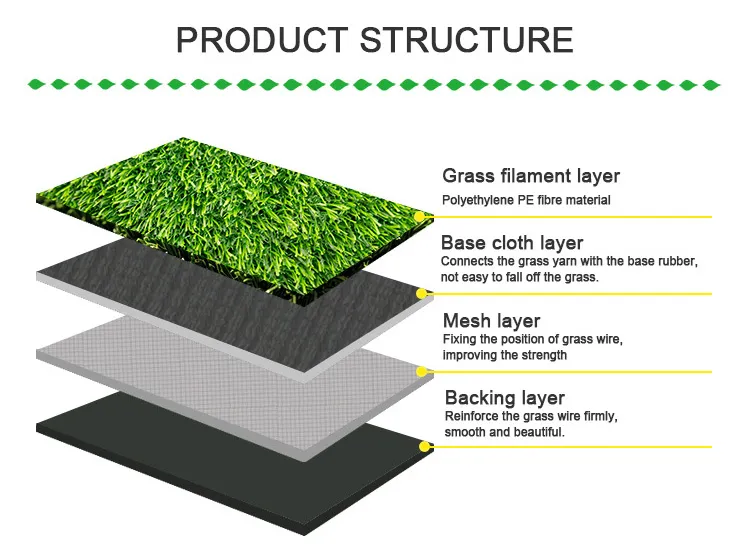
- Afrikaans
- Arabic
- Belarusian
- Bengali
- Czech
- Danish
- Dutch
- English
- Esperanto
- Estonian
- Finnish
- French
- German
- Greek
- Hindi
- Hungarian
- Icelandic
- Indonesian
- irish
- Italian
- Japanese
- kazakh
- Rwandese
- Korean
- Kyrgyz
- Lao
- Latin
- Latvian
- Malay
- Mongolian
- Myanmar
- Norwegian
- Persian
- Polish
- Portuguese
- Romanian
- Russian
- Serbian
- Spanish
- Swedish
- Tagalog
- Tajik
- Thai
- Turkish
- Turkmen
- Ukrainian
- Urdu
- Uighur
- Uzbek
- Vietnamese
dogs on artificial turf
Dec . 21, 2024 22:10 Back to list
Dogs on Artificial Turf Navigating the Pros and Cons
As pet ownership continues to rise around the globe, dog owners are increasingly finding themselves at the intersection of practicality and the well-being of their furry friends. One of the more contemporary debates in pet care revolves around the use of artificial turf for play and relaxation areas for dogs. While the synthetic grass has gained popularity due to its low-maintenance nature and aesthetic appeal, it’s essential to explore both its advantages and disadvantages to determine if it’s the right choice for your canine companion.
The Allure of Artificial Turf
Artificial turf, often made of polyethylene or polypropylene fibers, aims to mimic the look and feel of natural grass. Its rise in popularity can be attributed to several factors that appeal to dog owners
1. Low Maintenance One of the main advantages of artificial turf is its minimal maintenance requirements. Unlike natural grass, which needs regular mowing, watering, and fertilization, synthetic turf remains consistently green and neat. This can save owners time and energy, allowing for more quality playtime with their pets.
2. Durability Dogs, especially breeds that love to dig and chew, can be hard on natural lawns. Artificial turf is designed to withstand rough play, resist wear and tear, and remain intact even under heavy foot traffic. This durability makes it an appealing choice for active dogs.
3. Pest Control Natural grass can attract insects, including fleas and ticks, which pose a threat to your pet’s health. Artificial turf, on the other hand, is less hospitable to these pests, reducing the risk of infestations in your yard.
4. Aesthetic Appeal For dog owners who take pride in their homes and gardens, artificial turf provides a uniform and visually pleasing landscape. It can instantly spruce up an outdoor area, making it enjoyable for both pets and their owners.
The Drawbacks to Consider
dogs on artificial turf

While the benefits of artificial turf for dogs are certainly enticing, there are also several considerations that pet owners should be aware of before making a switch
1. Heat Retention One of the most significant drawbacks is the heat retention of synthetic grass. In warmer climates, artificial turf can absorb and radiate heat, making it uncomfortably hot for pets to walk on. It’s crucial to monitor surface temperatures, especially during the peak summer months, as this can lead to paw burns or discomfort.
2. Chemical Concerns Some artificial turfs are treated with chemicals for durability and maintenance, and there are concerns about the potential toxins these materials may leach into the environment or contact with your pets. It’s vital to choose a non-toxic, pet-safe option when considering artificial turf.
3. Odor Management Dogs relieve themselves on turf, just as they would on natural grass. However, urine can accumulate and lead to unpleasant odors if proper drainage isn't in place. Owners need to develop a routine for cleaning and maintaining the turf to prevent odors and maintain hygiene.
4. Lack of Natural Interaction For puppies and younger dogs, interacting with natural grass is a part of their sensory development. They learn important lessons by digging, rolling in grass, or sniffing around. Artificial turf, while serving its purpose, may limit these natural instincts and experiences.
Conclusion
In summary, artificial turf presents both appealing advantages and notable drawbacks for dog owners. While its low maintenance, durability, and pest resistance make it an attractive option, potential issues such as heat retention, chemical concerns, odor management, and the lack of natural interactions cannot be overlooked.
Ultimately, the decision to invest in artificial turf should be based on a thoughtful consideration of your dog's needs, your geographic climate, and your personal lifestyle. Consulting with a veterinarian and researching different turf options can help in making an informed choice that balances aesthetics, functionality, and the overall happiness of your four-legged friend. Whether choosing natural grass, artificial turf, or a combination of both, the ultimate goal remains the same providing a safe and enjoyable environment for your beloved pet to thrive.
-
The Benefits of Artificial Turf for Indoors
NewsJul.15,2025
-
How Artificial Grass Suppliers Ensure Quality Products
NewsJul.15,2025
-
Artificial Grass and Pets: A Space for Relaxation
NewsJul.08,2025
-
Balcony & Outdoor Decoration with Artificial Grass
NewsJul.08,2025
-
Best Indoor Artificial Grass for Home
NewsJul.07,2025
-
Best Pet Turf for Dogs: Safe & Durable Artificial Grass Options
NewsJul.07,2025
Products categories









